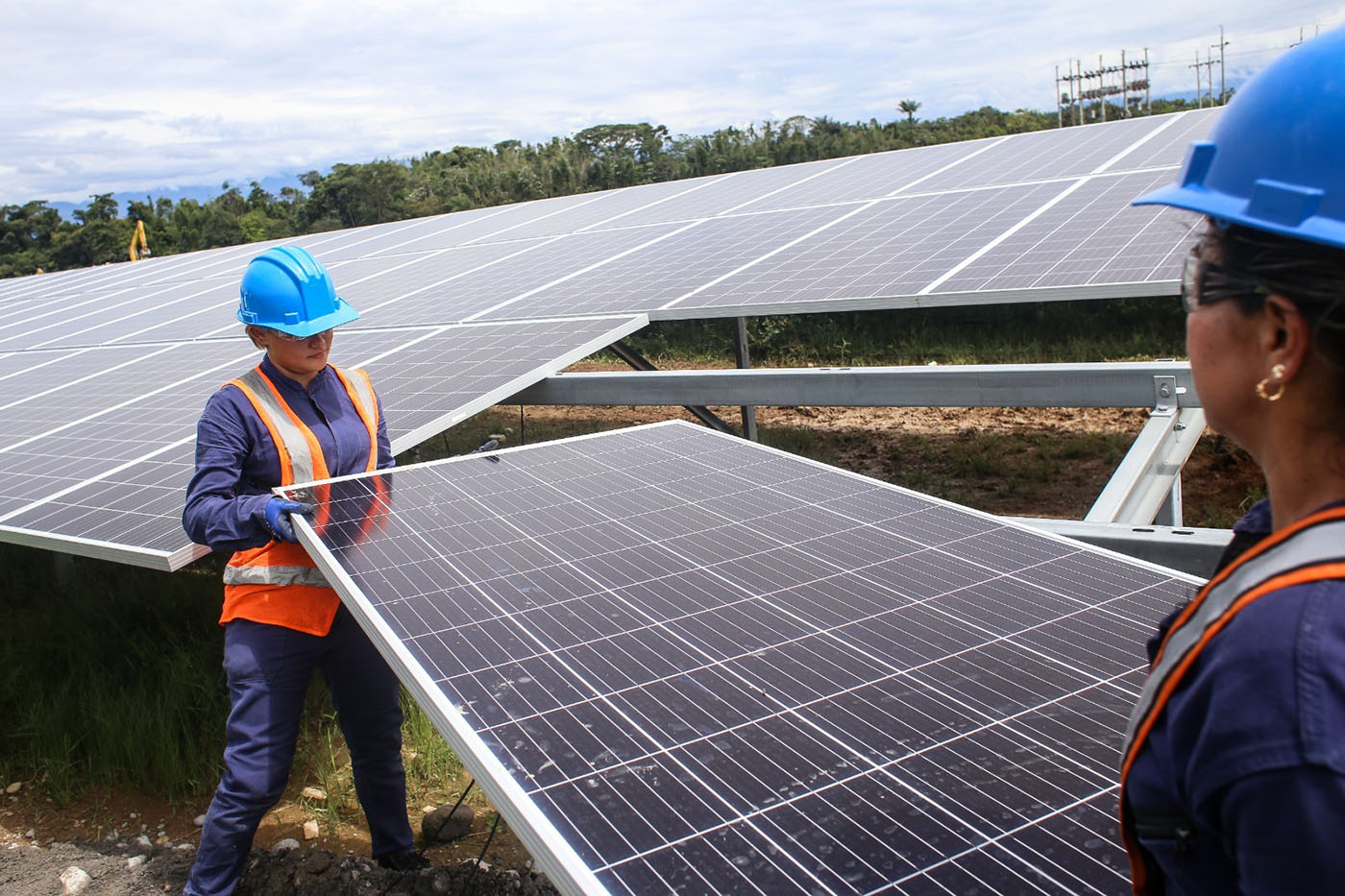to install solar panels on the roofs or patios of houses and buildings has become a sustainable alternative to capture and realize solar radiation photovoltaic energy. This solar panels They are specially made from silicon, the most abundant element in the earth’s crust after oxygen.
A laboratory study determined that its production using mixtures of elements such as indium, gallium and arsenic would improve your energy efficiency, increase your productivity from 30 to 60%because they manage to absorb the entire visible spectrum of solar radiation, from infrared to ultraviolet.
Loose solar panels They consist of small cells or lamellae that act as semiconductors and can transform sunlight (photovoltaic energy) in the field of electrical energy. A single module can contain more than 60 pieces of this, thinner than a human hair. Although these cells are currently in use, a study from the Manizales Campus of the National University of Colombia (UNAL), carried out in the Semiconductor Nanostructures Laboratory of the La Nubia campus, proposes to build the cells with mixtures of elements and a new technique to synthesize or merge the cells, layers of each.


In general the construction process solar panels It is done with chambers that use gases such as nitrogen, argon or helium. However, in this case a different method was used, called “atomic layer deposition”, where equipment called a scooter microwave performs physical vapor deposition instead of using gases.
“It is a kind of beam that collides with the white of the material and causes the particles of the part to lie on top of each other, creating a kind of layer,” explains Juan Esteban Salgado Salgado, a physics engineer at UNAL Headquarters of Manizales, who, with the collaboration of his professor Álvaro Orlando Pulzara Mora, Doctor of Physics from UNAL, focused the study on the use of the semiconductor elements III and V of the periodic table.
The three mixtures were: aluminum, gallium and arsenic, indium, gallium and arsenic, and gallium, arsenic and nitrogen. Gallium is found in small amounts in some minerals zinc (usually mined from sphalerite deposits) and aluminum; Arsenic is found in minerals such as arsenopyrite. The second was the most efficient.
“These elements were selected for their ease of being donors, that is, they have enough electrons to share, and they are also hollow, so they have spaces that allow more electrons to pass through and flow through the material. ” says engineer Salgado.
Solar panels made of indium, gallium and arsenic
To achieve this mixture, the cells were coupled at a temperature between 300 and 500 °C for a minimum of 3 h and a maximum of 8 h, with dimensions of 5 mm x 5 mm and a thickness of less than 1 mm. The bandwidth of silicon is 1 electron volt (eV), while for indium and nitrogen mixtures: 0.7 eV; galen and nitrogen 3.4 eV.
These reinforced cells are extremely effective because they manage to absorb the entire visible spectrum of solar radiation, from infrared to ultraviolet, unlike cells made only with silicon. In addition, silicon and manganese atoms were added to the outer layers, a physical method known as “doping” used to improve electrical conductivity.
The process is known as “monounion”, that is, a single cell made up of several layers; If you want to make it thicker or increase its efficiency, it is known as a ‘tandem model’.
The evaluation of the cells was done with the support of the Center for Research and Advanced Studies of the National Polytechnic Institute of Mexico (Cinvestav), mainly using two measurement techniques: scanning electron microscopy (SEM) and X-ray spectroscopy. energy dispersive EDS. The first gives an idea of the components of each of the layers and surface of the cell, and the second determines that it is actually composed of those elements added by the reflection of the electrons.
X-ray photoelectron spectroscopy (XPS) was also used, which focuses on the surface of the sample as the aim is to absorb as many photons as possible. Unlike the other two measuring techniques, this one does not tell exactly what type of chemical element there is, but rather what bond it is in (connections between elements).
“This contribution will improve productivity solar panelswith thin and more flexible films, with high efficiency to compete in the market, in which the research contribution manages to meet the proposal of the work which consisted in identifying, creating and generating a surface morphological and chemical description of the cell, to be able to measure its efficiency,” concludes engineer Salgado.

